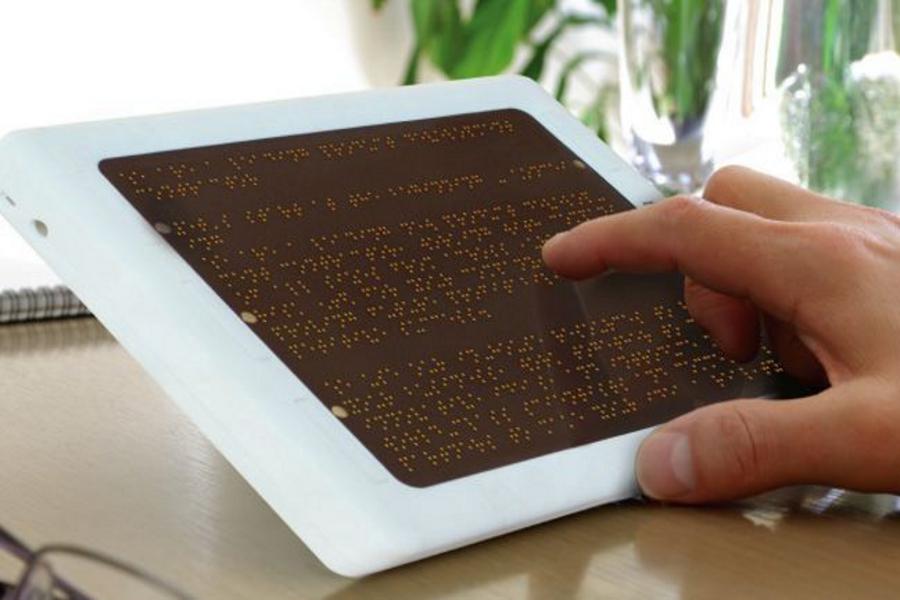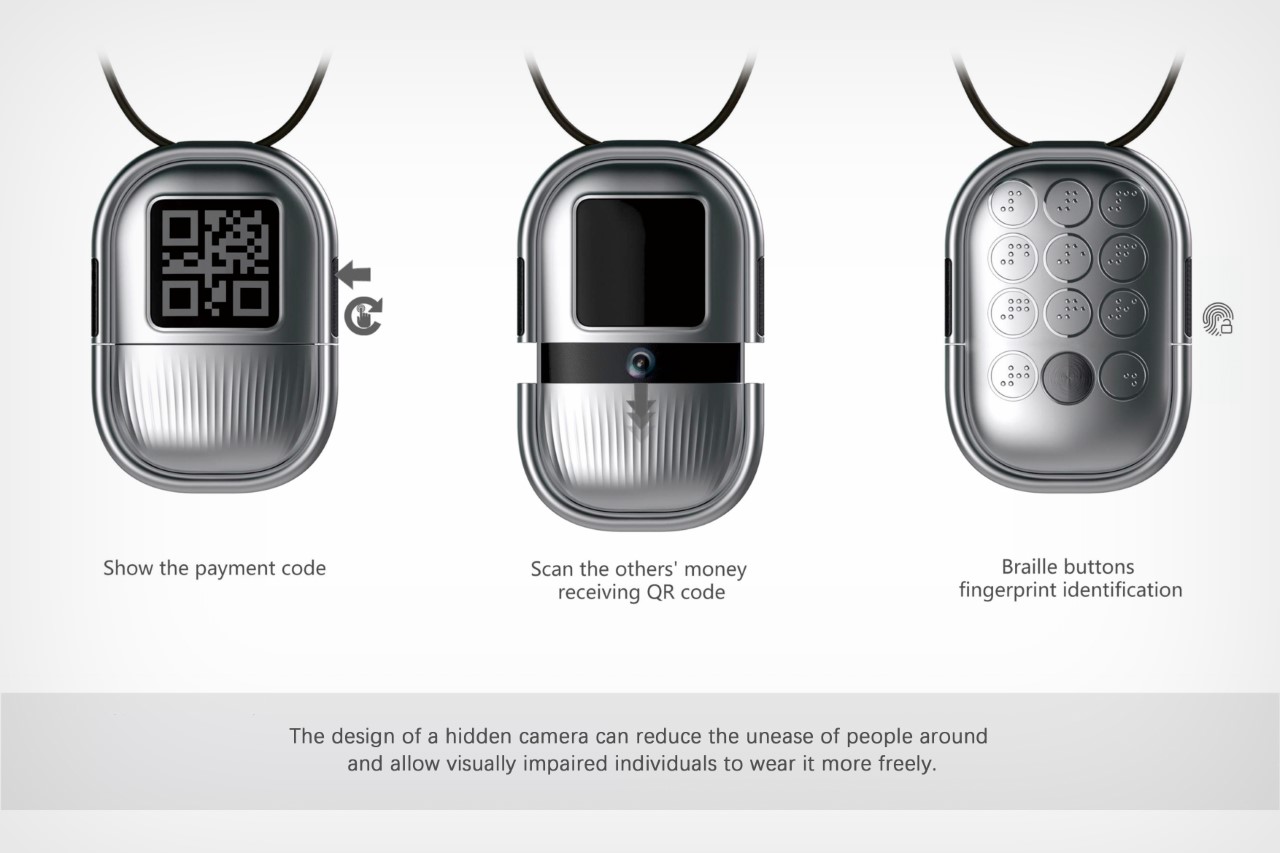AI-Powered Visual Aids: Enhancing Autonomy for Blind Users
AI-Powered Visual Aids: Enhancing Autonomy for Blind Users
Blog Article
Enhancing Lives With Advanced Assistive Instruments for the Blind
The combination of advanced assistive devices for the blind is changing just how individuals experience their surroundings and connect with their communities. What does this advancement suggest for the future of assistive modern technology and its function in empowering people?
Introduction of Assistive Instruments
Assistive gadgets for the blind encompass a varied array of devices and technologies made to boost self-reliance and improve the lifestyle for individuals with aesthetic problems. These gadgets accommodate numerous needs, from navigating and mobility to interaction and everyday job management.
One of the main categories of assistive gadgets includes mobility help, such as white walking canes and guide canines, which aid customers navigate their environments safely. Digital travel aids, furnished with sensing units and audio feedback, also play a substantial function in wheelchair enhancement.
In addition, tools that help with day-to-day living tasks, such as flexible cooking area tools, Braille labels, and chatting watches, empower people to do jobs independently. Communication help, consisting of display visitors and Braille display screens, help with accessibility to information and allow people to engage successfully with the digital globe.
Moreover, low-tech remedies like magnifying glasses and large-print products stay vital for several individuals. Jointly, these assistive tools offer not only as useful tools but likewise as important enablers of autonomy, promoting greater engagement in a globe that frequently focuses on sighted experiences. Their integration into day-to-day life is necessary for advertising inclusivity and enhancing total wellness for those with visual impairments.
Cutting-edge Technologies in Use
Technology in innovation has actually substantially transformed the landscape of tools offered for individuals with aesthetic problems. Amongst the most notable advancements are wise glasses integrated with increased fact, which provide real-time navigation assistance and item recognition. These tools utilize advanced video cameras and artificial knowledge to provide auditory signs, boosting the user's spatial understanding and autonomy.
Furthermore, mobile applications have actually become effective resources, making it possible for users to determine currency, read message out loud, and navigate unfamiliar atmospheres through verbal guidelines. Tools such as Braille screens and refreshable Braille devices proceed to evolve, using seamless connectivity with smart devices and computers, thus improving communication and access to details.
Wearable modern technology, including smartwatches geared up with voice-activated features, even more encourages customers by promoting quick accessibility to notifications and notifies without calling for visual engagement. Responsive maps and 3D printing are likewise getting grip, using tangible representations of areas that help in alignment and mobility training.
Collectively, these innovative innovations not only enhance the day-to-days live of visually impaired people but additionally foster greater self-reliance, inclusivity, and involvement with the more comprehensive community, thus improving understandings of availability. (AI-powered visual aids)
Individual Stories of Empowerment
Empowerment typically emerges from individual experiences that highlight the transformative influence of technology on individuals with aesthetic disabilities. Take, for circumstances, the tale of Sarah, a young artist that regained her passion for painting with making use of a wise walking stick outfitted with challenge detection. This tool not only facilitated her movement however instilled a newfound confidence, permitting her to browse public spaces separately and pursue her innovative undertakings.

These stories underscore the extensive effects that progressed assistive tools can carry life. By enabling individuals to get over barriers, innovation promotes a sense of autonomy and self-regard. Such empowerment stories act as prescription eyeglasses near me a testimony to the possibility of advancement, showing just how the right tools can significantly enhance quality of life and open doors to brand-new possibilities for those with visual impairments.
Advantages of Advanced Solutions
The assimilation of advanced technology right into assistive devices considerably changes everyday experiences for those affected by vision loss. Speech-to-text devices for low vision. Instruments such as clever canes geared up with sensing units, navigation apps, and wearable technology are designed to provide real-time comments, enhancing spatial recognition and decreasing the threats connected with mobility.
In addition, advanced assistive innovations cultivate social incorporation by helping with communication and interaction. Voice-activated gadgets and applications allow people to accessibility details and engage with their surroundings individually, damaging barriers that previously hindered their engagement in educational, professional, and social setups.
In addition, the personalization and adaptability of these remedies accommodate the varied needs of customers, therefore boosting their general lifestyle. Boosted capability, such as item acknowledgment and text-to-speech capabilities, equips people with aesthetic disabilities to execute jobs that they may have when located challenging. Eventually, progressed assistive innovations not just enhance self-reliance and security yet also advertise dignity and self-respect, enabling individuals to lead fulfilling lives.
Future Trends in Assistive Technology
As modern technology continues to progress, the landscape of assistive devices for the blind is positioned for remarkable improvements that will certainly better enhance availability and self-reliance. Arising patterns in assistive technology indicate a shift toward boosted combination of expert system (AI) and artificial intelligence, making it possible for gadgets to adjust to individual customer requires in real-time. These technologies are expected to promote more user-friendly navigating systems that can identify barriers and supply audio comments, significantly improving outside mobility.
Additionally, the advancement of wearable technology, such as smart glasses geared up with enhanced truth, will certainly allow customers to obtain contextual information regarding their surroundings, thus enhancing their spatial understanding. Improvements in haptic modern technology promise to develop responsive comments tools, permitting individuals to view details through touch, improving understanding and communication with their atmosphere.
Telecommunication advancements are likewise leading the way for remote support remedies, where trained professionals can give advice through video clip phone calls, making certain assistance is easily obtainable. As these trends unfold, the future of assistive tools for the blind will most read this certainly cultivate better freedom, encouraging people to navigate their world with confidence and simplicity.

Final Thought
The combination of sophisticated assistive gadgets for the blind represents a considerable innovation in cultivating independence and boosting lifestyle. By using cutting-edge technologies, these tools equip customers to browse their environments with higher self-confidence and freedom. As the area remains to develop, ongoing study and advancement will likely generate a lot more advanced solutions, even more changing the lived experiences of individuals with visual impairments and advertising a greater sense of inclusion within culture.
The integration of innovative assistive devices for the blind is transforming just how people experience their environments and connect with their neighborhoods. The combination of advanced technology into assistive devices significantly transforms daily experiences for those influenced additional hints by vision loss.As modern technology proceeds to evolve, the landscape of assistive tools for the blind is positioned for impressive advancements that will even more boost access and freedom. Emerging trends in assistive technology suggest a shift toward boosted integration of man-made intelligence (AI) and machine knowing, making it possible for gadgets to adjust to private user requires in real-time.The combination of sophisticated assistive tools for the blind represents a substantial advancement in cultivating freedom and improving top quality of life.
Report this page